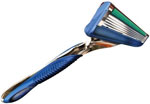 I’ve been thinking about the case I wrote about last week — “How Many FUE Grafts Actually Grew?” — about how a patient (we’ll call him Mr. Smith) came to NHI after feeling royally screwed over by another clinic he went to for his follicular unit extraction (FUE) procedure. It’s quite an interesting case of being scammed by a doctor that advertised super low prices, so I really suggest you read it if you have the time. Even so, I want to talk a little about value in surgery…
I’ve been thinking about the case I wrote about last week — “How Many FUE Grafts Actually Grew?” — about how a patient (we’ll call him Mr. Smith) came to NHI after feeling royally screwed over by another clinic he went to for his follicular unit extraction (FUE) procedure. It’s quite an interesting case of being scammed by a doctor that advertised super low prices, so I really suggest you read it if you have the time. Even so, I want to talk a little about value in surgery…
If you run the numbers, you will see that the actual growth of hair was only 25% of what he got transplanted. There were two consequences of this:
- Of great importance is the loss of your finite (limited) supply of donor hair. In the case of Mr. Smith, his surgeon killed 3 out of 4 hairs that were transplanted. These hairs are forever lost to the patient. I also believe that there was damage produced to the donor area, evident by a thin see-through appearance. His donor supply is significantly worse off following his FUE procedure than if a scar formed from a strip surgery, which could have been easily hidden by surrounding hairs. FUE is not always the answer to harvesting hair without post-surgical consequences, as seen in Mr Smith’s case.
- Of lesser importance, the cost per graft was multiple times higher than what the patient thought. Let’s assume that Mr. Smith paid $5/graft. When measured against growth, his actual costs were $15/graft for the work that was done. The rate he paid had nothing to do with the value he actually received (in his end result), as he really was paying more for less. That’s quite a bit of money out of his pocket.
The lesson here is that experience in a hair transplant surgeon and his team is directly related to the actual costs when measured by the yield of what actually grew from the hair transplant. My advice to prospective patients is to change the way you look at value! In our practice, we allow prospective patients to meet our patients to see what type of results they got. As these Open House events are open to all patients (or future patients), anyone with results like shown in Mr. Smith’s example will be as evident as the nose on your face. This will help you in the education and selection process. This type of surgery is forever, and unfortunately some patients have to learn the hard way when they try to pinch pennies by going to a surgeon that has no business messing with your hair.

 Just after I published a post about the
Just after I published a post about the 

 You should ask this question to the doctor who is going to do the surgery. Don’t be afraid to ask questions to the person that will be performing a permanent cosmetic procedure on your scalp. Have an open dialog!
You should ask this question to the doctor who is going to do the surgery. Don’t be afraid to ask questions to the person that will be performing a permanent cosmetic procedure on your scalp. Have an open dialog!